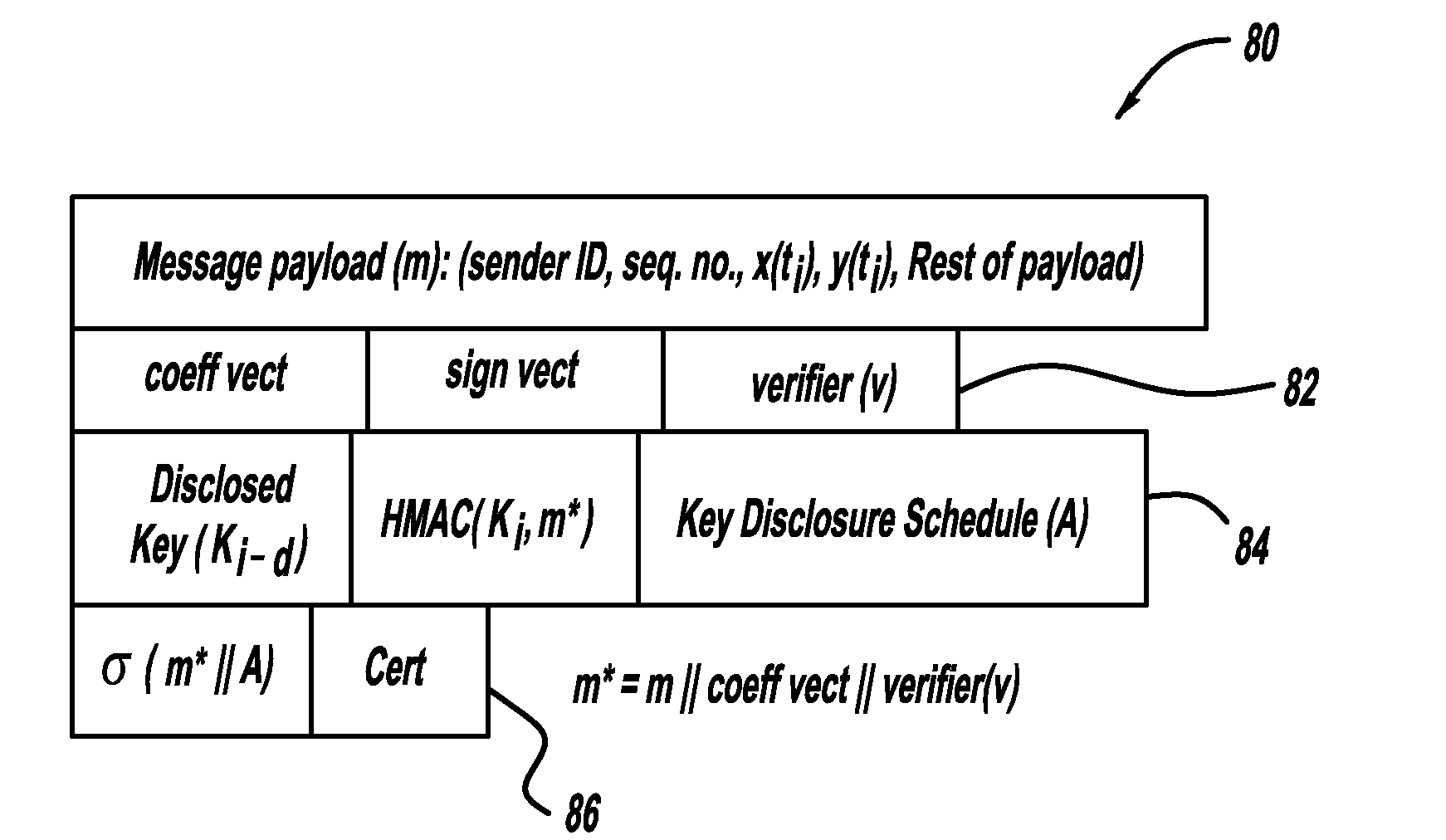Lightweight geographic trajectory authentication via one-time signatures
a geographic trajectory and one-time signature technology, applied in the direction of public key infrastructure trust models, instruments, traffic control systems, etc., can solve the problems of consuming a non-negligible amount of the share of an automotive processor for generating and verifying digital signatures
- Summary
- Abstract
- Description
- Claims
- Application Information
AI Technical Summary
Benefits of technology
Problems solved by technology
Method used
Image
Examples
Embodiment Construction
[0027]The following discussion is directed to exemplary embodiments of a system and method for providing active safety applications in a vehicle-to-vehicle communications system that employs lightweight geographic trajectory authentication using one-time signatures. The embodiments set forth herein are merely exemplary in nature, and are in no way intended to limit the scope of the invention, its applications or uses.
[0028]FIG. 1 illustrates a plan view of a vehicle 10 including an on-board unit (OBU) 12 for a V2X wireless communication system. The OBU 12 receives location information from a GPS receiver 14, and is able to communicate with other OBUs on other vehicles within a limited range.
[0029]The wireless communication system employs a technique referred to as trajectory authentication to address the problems set forth above for V2V communications. Using the proposed technique, each vehicle constructs a discretized representation of its trajectory, which captures its kinematic h...
PUM
 Login to View More
Login to View More Abstract
Description
Claims
Application Information
 Login to View More
Login to View More - R&D
- Intellectual Property
- Life Sciences
- Materials
- Tech Scout
- Unparalleled Data Quality
- Higher Quality Content
- 60% Fewer Hallucinations
Browse by: Latest US Patents, China's latest patents, Technical Efficacy Thesaurus, Application Domain, Technology Topic, Popular Technical Reports.
© 2025 PatSnap. All rights reserved.Legal|Privacy policy|Modern Slavery Act Transparency Statement|Sitemap|About US| Contact US: help@patsnap.com



